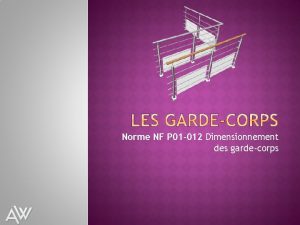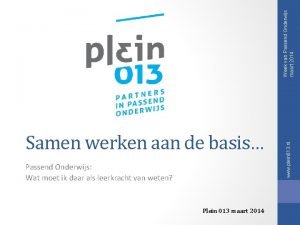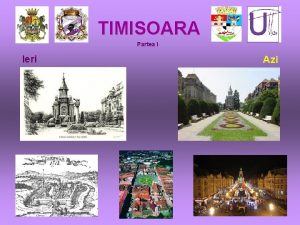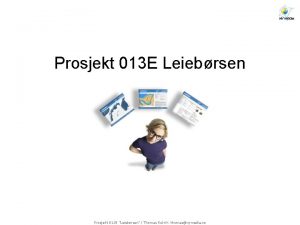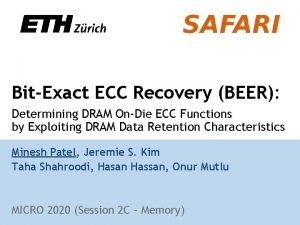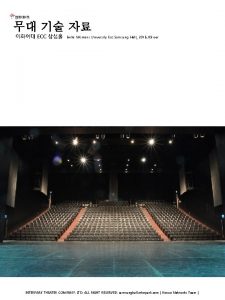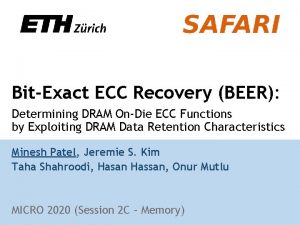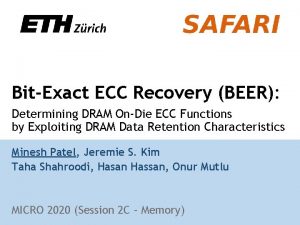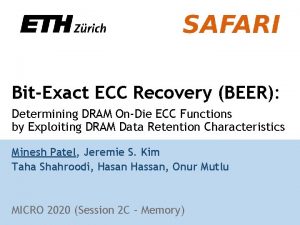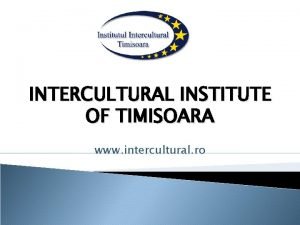ECC SE 718Info 013 ECC SE 7 Timisoara









- Slides: 9

ECC SE 7(18)Info 013 • ECC SE 7 Timisoara, Romania, 19 -21 September 2018 Date issued: 21 September 2018 Source: JTIDS/MIDS MNWG Subject: DME/TACAN Image frequency rejection -- Presentation 2 Group membership required to read? (Y/N) N Summary: DME/TACAN 128 MHz Image Frequency rejection measurements from 2010, identify that equipment operating above 1164 MHz are stillimpacted by transmissions below 1164 MHz, which was presented verbally this week at this meeting. This presentation provides Test Data from 2010 which were first provided as a MNWG presentation to MNWG in 2011 Proposal: · SE 7 to not the test data provided · Ammend the study accordinly to include the of PMSE operating below 1164 MHz to aeronautical receiver operating above 1164 MHz for consideration and inclusion in the working document as appropriate.

SASWG DME INTERROGATOR IMAGE CHANNEL

Overview • A method used to determine image-channel effect using CW interference on a Bendix / King KN-64. • EUROCAE ED-54 and ICAO Annex 10 provide no DME interrogator receiver image-channel rejection figure. • Some Interrogator manuals specify 50 d. B image rejection.

King / Bendix KN-64 • KN-64 has a fixed tuned pre-selector with a 3 d. B bandwidth of 950 MHz to 1240 MHz. • Much of the KN-64 receiver IF selectivity is achieved using a 180 o phase shift network in conjunction with a quadrature detector this provides a 3 d. B bandwidth of 0. 42 MHz. • The Bendix / King KN-64 receiver design is also incorporated on the Bendix / King KN 62 and KN-62 A. All are GA equipments

Image Channel CW Interference Measurement Method • A Beacon Simulator (BS) was used to measure the sensitivity of a DME Interrogator receiver: – – Squitter 700 ppps 70% BRE Range 200 nm Channel 32 X & 59 Y (993 MHz and 1146 MHz respectively) • To ensure a firm lock-on, the ASOP signal level was increased to -81 d. Bm. • An Image-frequency CW interference signal was introduced. • The CW signal level was adjusted until break-lock occurred. The CW signal level was recorded. • Adjust CW frequency in 100 k. Hz steps and repeat previous step.

X Mode CW Image Channel Curve

Y Mode CW Image Channel Curve

Conclusions • It can be seen from the curves that DME break-lock occurs with image-channel CW interference signal level of -94 d. Bm. • Co-channel performance is similar. • Although the DME interrogator has no image channel rejection, its receiver complies with ICAO Annex 10, Eurocae ED 54 and TSO 66 A. • The Bendix/King KN-64, KN-62 and KN-62 A are all GA equipment.

DME Interrogator Image Channel QUESTIONS


